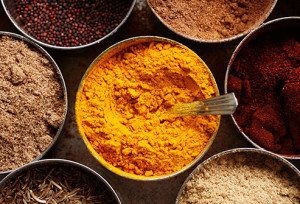Ilana Katz MS, RD, CSSD
One of the major responsibilities a dietitian/nutritionist may have is to analyze an individual’s intake and ensure most appropriate and healthy solutions to goals and needs.
For people who regularly take medications, even over the counter products, this can become quite challenging. So then, can some ingredients in various dishes have a pharmalogical interaction?
Specific examples best defines what a pharmalogical interaction is: Combining a statin drug (most likely prescribed to lower cholesterol) and a daily dose of grapefruit juice may likely cause too much of the statin to stay in the metabolic system, increasing the risk of liver or kidney failure. Another example is that certain nutrients in grapefruit juice (and some other juices too) may decrease the effectiveness of some medications, the most well-known in this category is for allergy symptoms.
What then should we be concerned of in multiple ingredient recipes? A tablespoon of this, a teaspoon of that, a dash, a dollop or a pinch…
As a supplement for example, Ginger is thought to remedy nausea or upset stomach and garlic is reported to reduce risk of heart disease and cancer. But did you know that both ginger and garlic may also slow blood clotting when interacted with an anticoagulant drug such as warfarin or Coumadin. The practioner prescribing the anticoagulant should warn the patient against eating garlic or ginger, and this should also be reinforced by the pharmacist dispensing the anticoagulant drug. But what about these ingredients used in small quantities in many recipes?
It is likely a different story when one compares cooking and baking to supplementation. The amounts in a recipe are typically significantly smaller compared to their use as a supplement. Interactions may lurk in the background but would typically not be clinically significant. Unfortunately there is very little published research on the potential for drug interactions with herbs and spices that are typically used for culinary purposes versus supplements. The research that is available usually focuses on specific compounds in the herb or spice and will usually use concentrated preparations which logistically do not match the culinary amounts. An example to demonstrate this is an alkaloid called piperine, found in black pepper: piperine has been proven to increase the bioavailability of several drugs yet no interactions have been found with the use of pepper as an ingredient in a recipe. Other examples where research has discovered a drug interaction, yet no significant reaction as a culinary spice are anise, cayenne pepper, fennel, and several curry spices. It thus seems that research in food and medication reactions is complicated with many variables besides the amount used that need consideration.
The variety of the herb/spice, the potency, how much may be taken in throughout a day and over a time period, even specific genetics of the individual in question may determine the metabolic effects of their medications and thus the potential interaction between the herb or spice and their medications.
Mixing a sprinkle of all spice or a teaspoon of cinnamon into a recipe for a dozen muffins or blending chopped garlic into lasagna is not usually a concern for a drug interaction.
Unfortunately there is very little published research on the potential for drug interactions with herbs and spices that are typically used for culinary purposes versus supplements.
However, before taking any supplements, speaking to a physician, pharmacologist or dietitian about potential interactions is recommended.
“It may be a case of the dose makes the poison” (Paracelsus – a 16th century physician)

